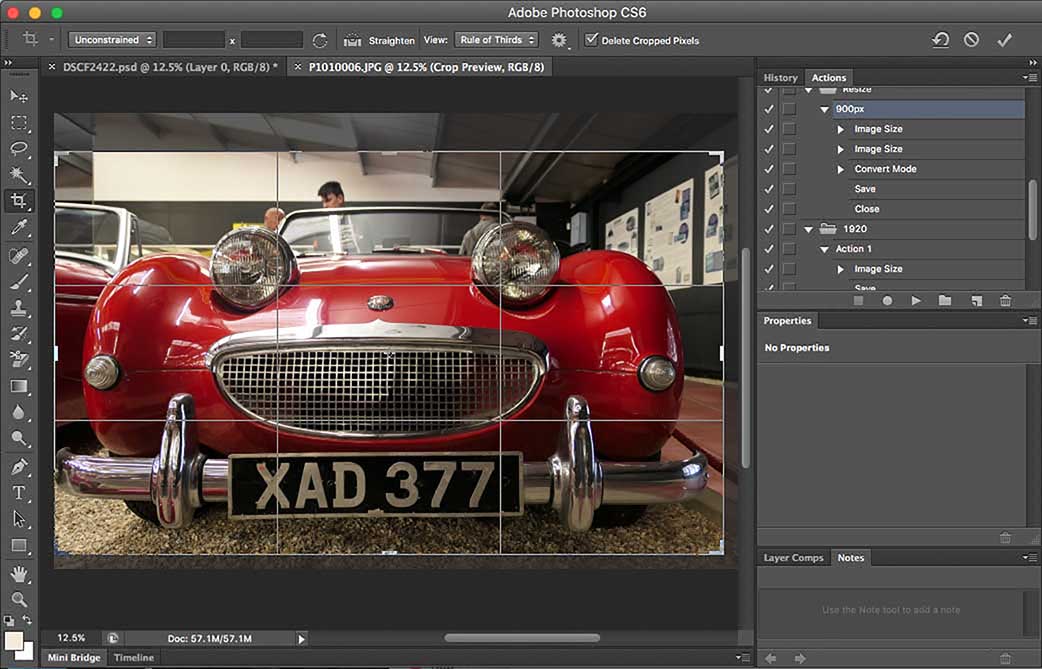One of the many advantages digital photographers have over film is the ease with which you can crop a photo in the digital darkroom to improve a composition or give a subject more impact.
What’s more, cropping photos has got even easier as cameras have grown more sophisticated. Many new cameras now offer in-camera cropping options, meaning you no longer need to go into Photoshop, Lightroom or your photo editing software of choice to crop an image.
Also, as high-resolution full-frame sensors come down in price, many photographers can now crop into an image and still come away with a photo that is big enough to print.
But is the ease of cropping photos these days really such a good thing? I’d argue, no. While cropping photos is a good way to rescue an image, you don’t want it to become a crutch. Here are four reasons why you should limit the amount of cropping you do.
01 Cropping can make you lazy
This is probably my biggest problem with cropping photos. As someone who enjoys street photography, cropping can definitely make you lazy and removes the intimacy from an image.
Why make the effort to get closer to your subject when you know that you can just use your editing software to mimic a closer proximity?
This is something I see all the time. And I’m guilty as well! There’s something less personal about a street portrait, for instance, when you’ve cropped in on an unsuspecting subject from across the street rather than gotten physically closer so they can engage with your camera.
What’s more, when you actually get closer to a subject – or change your lens – you usually end up with a better-composed image.
Cropping is easier, and it’s less frightening than putting yourself out there and asking someone for their photograph.
But it’s not helping you grow as a photographer. It doesn’t help you gain confidence in working with subjects, posing people, teasing reactions and engagement from people you don’t know.
This is a common problem in travel photography, as well as street and portrait photography. Cropping becomes a crutch to avoid interactions with people, and the less practice you get your photography will never move on.
Your images might be technically proficient, but they will lack the intimacy that makes a viewer really connect.
SEE MORE: The differences between Lightroom and Photoshop
02 Cropping makes you work too quickly
This is sort of related to the laziness side effect we talked about above. Because you know that you can always crop out distractions when you’re back on the computer, you tend to work too quickly.
And when you work too fast you don’t put the same care and thought into your compositions.
This happens to me all the time. When I shot film and knew I only had 36 exposures I would take my time and inspect a scene from edge to edge of the frame. I would test out different compositions, add and remove elements. It took hours!
Now, I fire off a bunch of frames in succession. Maybe I’ll try shooting from a couple different angles. But most of the time I’m putting less care into my compositions than I did when I shot film.
It’s a bad habit to get into. I have to remind myself to slow down and think about what lens I’m using, what I want to include in the frame, which angle will give my scene the most dramatic effect.
I might end up with fewer shots on a day out when I work like this, but the ones I do come home with will be much higher quality.
03 Cropping can cause printing problems
Unless you’ve got a full-frame and/or high pixel-count camera, one of the other problems with cropping photos is that your cropped image might lack enough resolution for you to be able to print it at a big enough size.
If you’re only intending to share your images online, then you should be fine. But sometimes an image that looks fine on screen can suffer output problems.
What’s more, when cropping you also need to be sure you have cropped to exactly right the dimensions, or the image might need to be resized at the printing stage.
04 Know when to crop
Of course, there are times when the convenience of cropping is perfectly justifiable. Cropping to rescue an image that you didn’t quite capture right and which you won’t have an opportunity to photograph again is certainly acceptable.
All I’m saying is just don’t rely on your Crop Tool too much! It makes you lazy.
Cropping is best used as a last resort, however, rather than as part of your regular workflow. Try telling yourself that you can’t crop, and see how that changes how you work.
READ MORE
Best Lightroom tips for smarter post-processing
Best online photography courses at Udemy for less than £20




Of course the world conforms nicely to a 3×2 aspect ratio … or is that 4×3, or 1×1, or 6×7, …
You can, of course, publish your photos uncropped.
And will continue to crop my photos to whatever works visually.